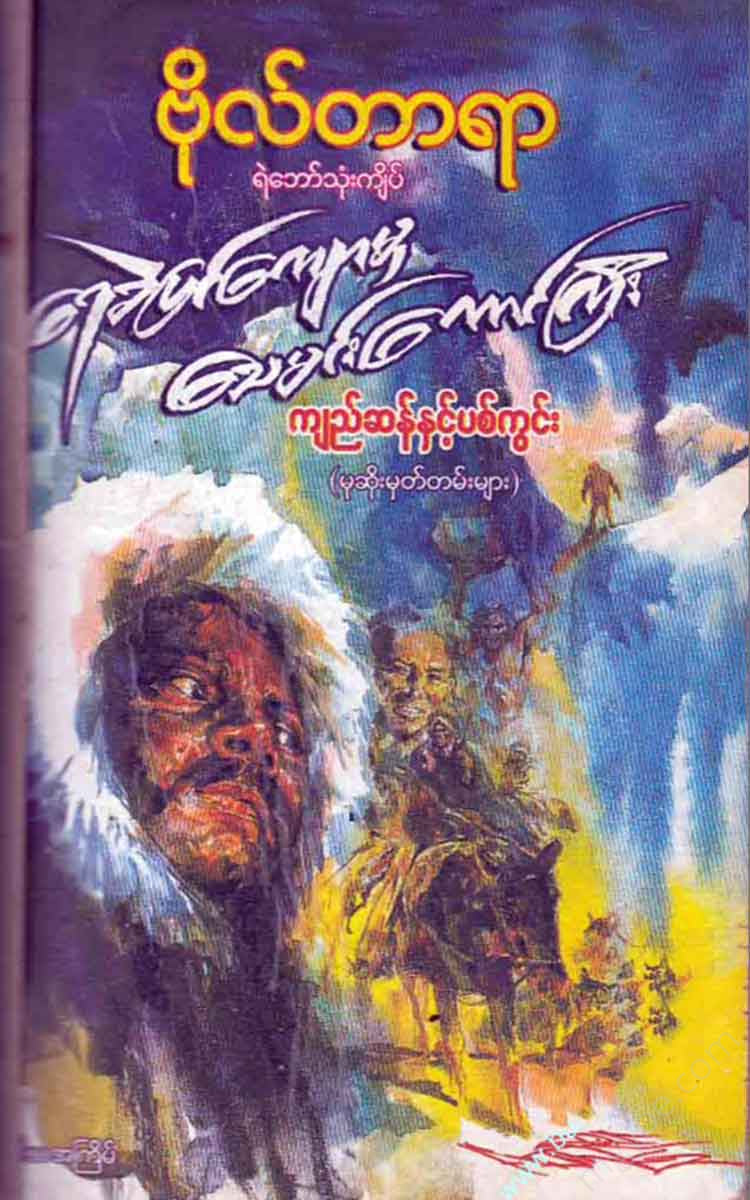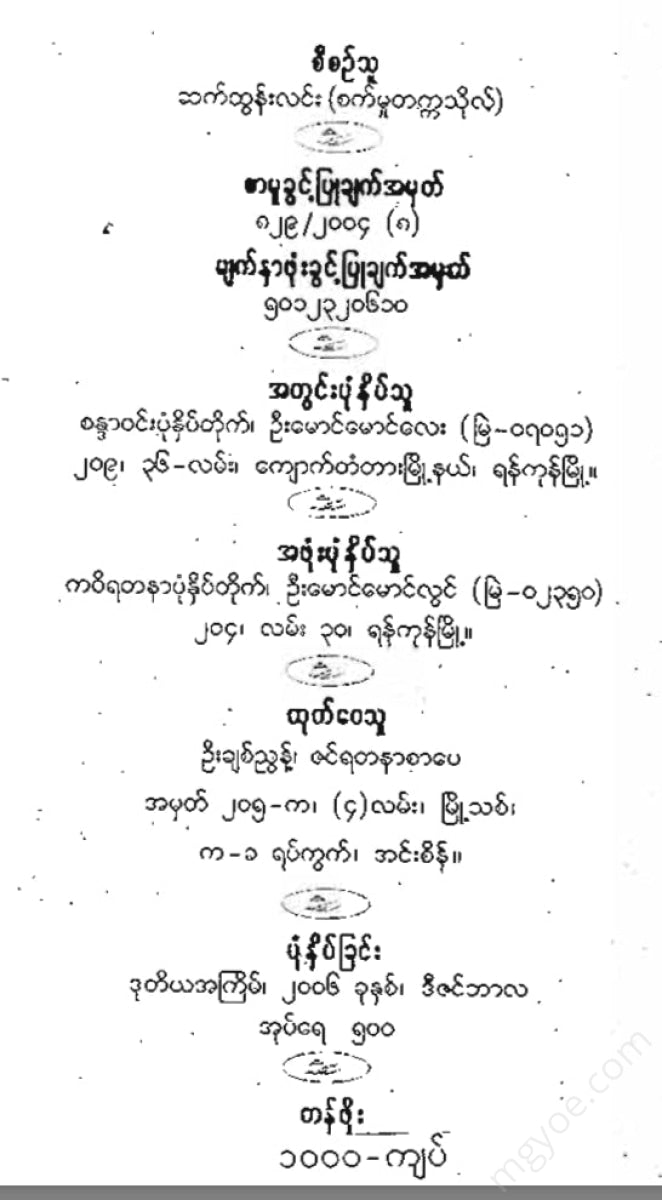Other Websites
Captain Tara (Thirty Comrades) - The Great Death from the Ice
Captain Tara (Thirty Comrades) - The Great Death from the Ice
Couldn't load pickup availability
:: Click on Buy it now to download the ebook . After placing your free order, the download link will be sent to the reader's email address used to log in to the mgyoe.com website.
:: The Ebook (Free) books on mgyoe.com are only books that have been circulating on the internet for a long time.
:: It is just a compilation so that readers can easily find it when they want to read it.
:: If reprinted by bookstores, the download links for these e-books will be removed.
------------------------------------
A good journey to die for
'
Sometimes, whenever I thought about the past, I would shiver until I broke out in a sweat. When I went back to sleep, I suddenly couldn't sleep because of the visions of the past, which included seeing the huge, strong arm of a giant creature and the large, round face. At the same time, I saw the giant creature's big eyes, a long, short nose, and a mouth with large, white teeth protruding from under the big nose. I could see the past again and again. The cruelty of the half-human, half-animal creature on the frozen ice was also worth recording.
As for us, the members of the investigation team who had invaded his territory, we could only forgive ourselves for criticizing the Lisu people in the border region who had been so shaken and disheartened by the fear of facing the snowmen, as the saying goes, "You can't believe it if you don't see it." We had to witness the amazing speed and immense strength of the snowmen that had been talked about so much. .
. The phrase "for the people and the country" is often used to mean "putting the work first and doing it without hesitation." Due to the fanatical patriotism of the Japanese people, I, my comrades from the Tatmadaw, two Japanese research experts, and the guard in charge arrived at the border area in such a dangerous mountain range during the short war period. We completely ignored the urgent warnings of the Lisu and Tibetans from the neighboring border area and did not retreat to this icy area, which resulted in the deaths of important people in our group and innocent villagers from the border area.
When comparing the results obtained by exchanging human blood and scales for the main objectives of the Japanese military's exploration, the results were not enough to tell the story of the profits. The Japanese military did not receive the "precise" information it needed.
The author has created a story about fate that is quite interesting from the experience of that snowy mountain region. For all of us members of the investigation team, there was no hope of returning to our home base with our lives and bodies after the adventurous journey. On the other hand, since the fate of a human being has not yet encountered death, I must confess with joy that I was able to report that journey to the snowy mountain region to the readers while still alive. On the other hand, my experience in the jungle, my courage and the preparation of soldiers' life training, on the other hand, my ability to deceive the enemy, and the wisdom that suddenly appeared in times of danger and danger, made me very happy to be able to fulfill my unfinished duties of the Myanmar Army to the end. . . We endured the bone-chilling cold of the sub-zero ice region, and ate only dry bread and dried meat, which were not cooked properly, and we successfully fulfilled our special mission of protecting the lives of a very important group of explorers by preventing the onslaught of the ocean in time. We successfully fulfilled part of our mission of protecting the lives of a group of comrades, Sergeant Than Tun of the Tatmadaw, and I. The final situation of our comrades was a life of misery and lack of food and medicine. )
If you take one step, you will fall into the abyss of the abyss, and you will be crushed to death, and your bones will be destroyed. A group of our comrades have successfully overcome the dangers of the region , and as members of the mountaineering research team, they will be called real (frightening) giants of the snow people. This is just a turn in the life cycle of us ordinary people who call them snow people and the civilization of the plains.
The knowledge, culture, and understanding between their snowmen and our human (or) civilized people on the ground was a barrier. Their snowmen (or) giants roamed the Himalayan peaks, eating and drinking according to the weather and the food they depended on, such as water and grass, and the trees and shrubs. I now believe this from my own experience. I had read about it in books and magazines in the past, but because of my ideological background, I would not believe it unless I saw it firsthand, so I did not accept the existence of snowmen (or) mountain savages.
No one would deny that there are many mysterious and mysterious things that we, the people of the world, who say that we are civilized, do not know. However, civilized people do not know much about such mysteries and things. The reason for knowing is because they do not venture out to the places where such strange things happen and exist, do not study them, and are immersed in their own processes and business affairs. . The ancient people (or people from other regions that we do not know) have been separated from us and have not seen each other since the present-day rocket age and atomic age. ` Real events, experiences and solid evidence
By studying the evidence, we are completely disconnected from the ancients (or our modern-day counterparts) who claim to be civilized.
The existence of the ancient people in the jungle could no longer be concealed. They had been conquered by building up their own structures little by little.
"We had to fight our way through the ice, which was blowing in a "huhuhu" manner, and with our arms and weapons, which weighed no less than sixty pounds, we climbed the ice and snow with a single step, facing the cold wind. The cold from our exposed surfaces turned our previously white skin into a brown, rotten skin, which we had to record as a souvenir after our journey. It is worth noting that when I measured my body parts again, before I reached this ice region , my calves were sixteen and a half inches long, but when I measured them again after returning from that mountain region, I found that my calves had been severely exercised by the strenuous journey up and down the mountain, and they were seventeen inches long. However, the upper part of my body was much smaller than my upper part. But in the forearms and hands, each quarter of the body is reduced and sloping. This is only evidence of the fact that the lower part of the body worked harder while carrying heavy loads.
The most interesting facts we have learned are about the habits of the predators of the mountains, and the most remarkable of them are the giant bears. More remarkable are the tigers of the ice region, which have longer fur and are more resistant to the cold than the big cats found in the lower plains, and the sparsely-furred wild goats and sheep, and the habits and diet of the very few savage ancient men of the mountains, who are half-human, half-animal, and half-human. These chieftains, who live in the mountains with their large bodies and without any clothes, and who live in a savage manner, - we are told - by the use of firearms, They were so used to it that they recognized the invaders as (or) barbarians and attacked them as if they were a threat, and the story of us and the ancients began to emerge all over the world.
For example, if we were to give a degree, the Mountain Men (MounTain Men se TimBer Men' cosopć:09RE:G:op:) of the British Columbia region in North America and the Snow Men (Snow Men) of the Himalayas . The third example is the Jungle Men (Jungle Men) of the Malayan region . It is undeniable that we are witnessing the stories of ancient people who cannot be hidden (or) who have survived in remote areas that are disconnected from us. .
Most notably, the famous British mountaineer Sahi Kari team has confirmed the existence of snowmen on the Himalayan peaks with a convincing photo of snowmen's footprints.



